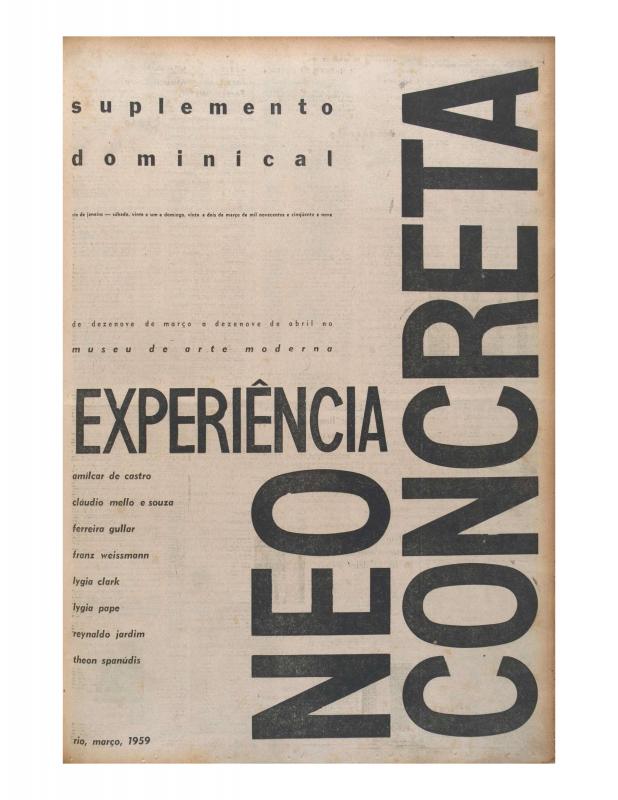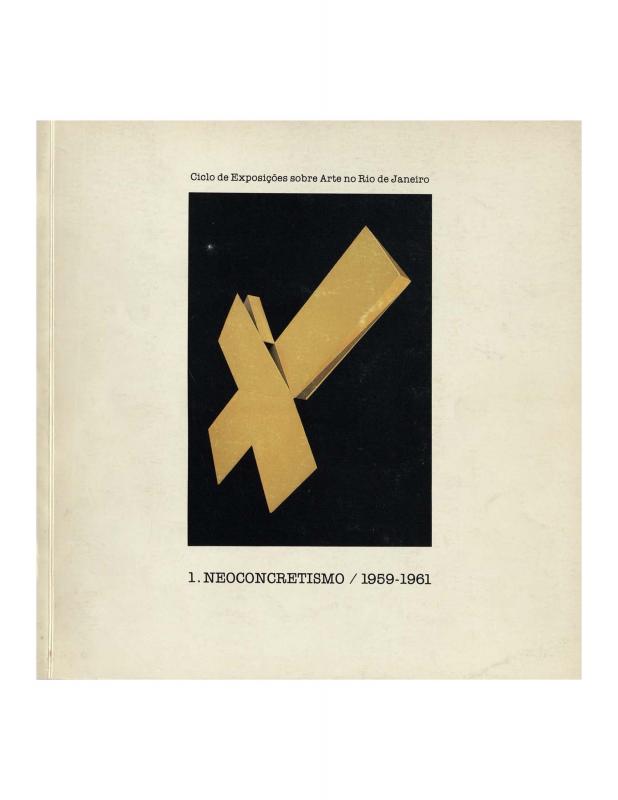As is clear from this essay, the critic [José Ribamar] Ferreira Gullar (1930–2016) was closely aligned with the founding of the Neoconcrete group of artists. After publishing his essay “Theory of the Non-Object” in the Sunday Supplement of the Jornal do Brasil on December 19-20, 1959, he became the movement’s main theoretician.
This text, in which Gullar reviews some of his signature theories, was originally published in the inaugural issue of the magazine Revista Crítica de Arte in 1962. It is reproduced in the catalogue Projeto Construtivo Brasileiro na Arte, which accompanied an exhibition organized in São Paulo by Aracy Amaral (b. 1930) and by Lygia Pape (1927–2004). It had a great impact in Brazil, and it led to a new reading of the meaning of the rationalist movements in the nation’s art. In 1977, the show was presented at the Pinacoteca do Estado de São Paulo, and later at the MAM-RJ (Museu de Arte Moderna do Rio de Janeiro).
[For complementary reading on this exhibition, see in the ICAA digital archiveby Lygia Pape “Projeto construtivo brasileiro na arte” (doc. no. 1110680); by Jorge Romero Brest “A arquitetura é a grande arte de nosso tempo—1948: Romero Brest em São Paulo” (doc. no. 1314972); and by Tomás Maldonado “O problema da educação artística depois da Bauhaus” (doc. no. 1315069).
For more by Ferreira Gullar, see “Manifesto Neoconcreto” (doc. no. 1110328); “Do quadro ao não-objeto” (doc. no. 1091272); “Cor e estrutura-cor” (doc. no. 1091219); “A poesia neoconcreta” (doc. no. 1315256); “Arte neoconcreta: uma experiência radical” (doc. no. 1315414); “Arte Concreta” (doc. no. 1315020); and “Da arte concreta à arte neoconcreta” (doc. no. 1315036), among others].









